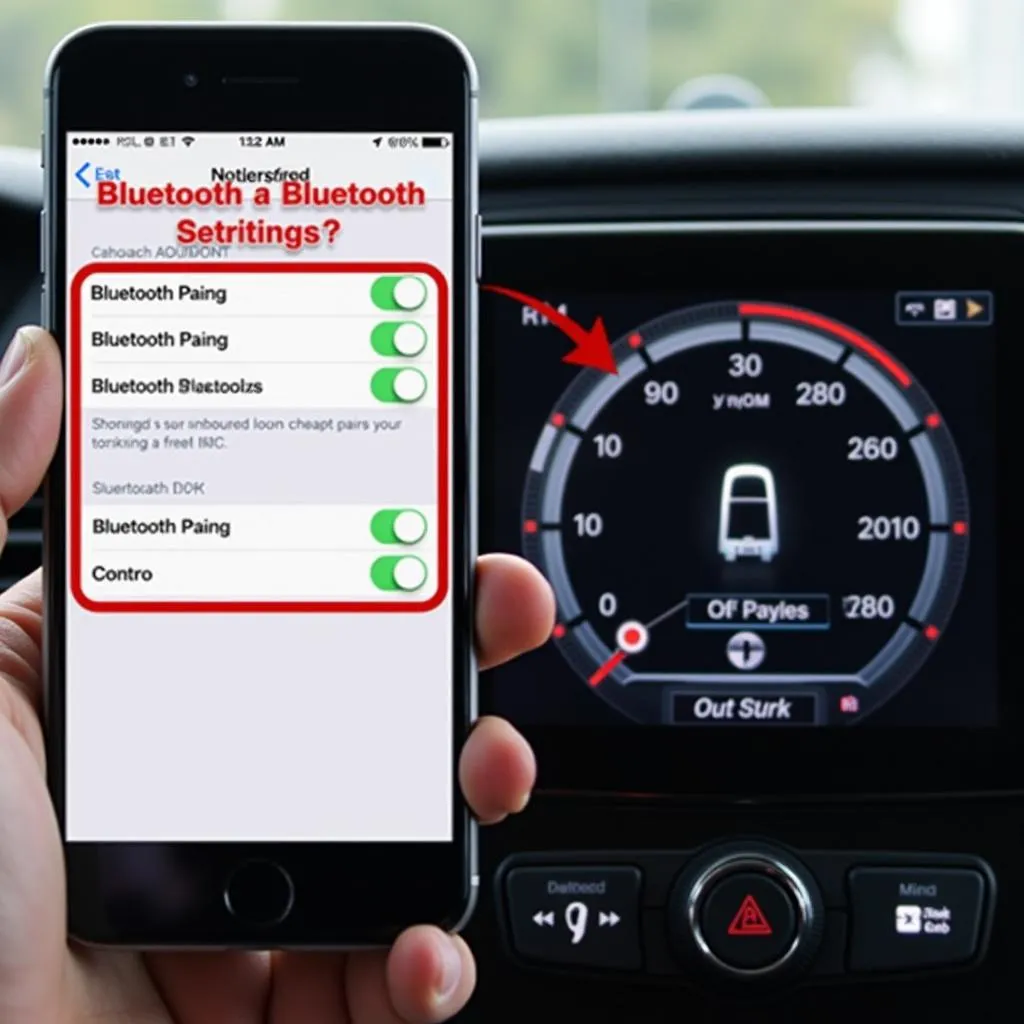Imagine this: you’re about to head out for the day, you go to start your car, but nothing happens. It’s a frustrating situation that many car owners have experienced at some point, and the culprit is often the anti-theft system. But how exactly does this system, designed to protect your vehicle, sometimes end up preventing you from even starting it?
Understanding the Anti-Theft System
At its core, an anti-theft system is your car’s security guard. It uses a complex network of electronic components to deter theft and unauthorized access. The system typically consists of several key components:
- Immobilizer System: This system prevents the engine from starting without the correct key present. It utilizes a transponder chip embedded within the key that communicates with the vehicle’s Engine Control Unit (ECU).
- Alarm System: This is the most recognizable part, often featuring a loud siren, flashing lights, and sensors that detect forced entry or movement.
- Keyless Entry System: This allows for locking/unlocking and sometimes starting the car without physically inserting a key. It also plays a role in the immobilizer’s function.
How It Works
When you insert your key (or use your keyless remote) the transponder chip inside sends a unique code to the car’s ECU. If the code is recognized, the ECU allows the fuel pump and starter to engage, letting you start the engine. However, if the wrong code is sent (like from an unauthorized key), the ECU will remain locked, effectively disabling the vehicle.
Common Issues and Troubleshooting
While anti-theft systems provide an essential layer of security, they can sometimes malfunction, leading to frustrating situations where the system prevents the rightful owner from starting the car. Here’s what might cause the issue:
1. Weak or Dead Key Fob Battery: A weak key fob battery can disrupt the signal between the key and the car, leading the immobilizer to think the wrong key is being used. Replacing the battery usually resolves this.
2. Faulty Ignition Switch: The ignition switch itself can wear down over time, leading to poor contact with the key and interrupting the signal to the ECU. This may require replacing the switch.
3. Malfunctioning ECU: In rare cases, the ECU itself could be faulty, misinterpreting signals and preventing the car from starting. Diagnosing and potentially reprogramming or replacing the ECU may be necessary.
Diagnostic Tools
Identifying the root cause often requires specialized diagnostic tools. These tools can read the error codes stored in the car’s computer, providing valuable insights into the specific problem with the anti-theft system.
If you’re experiencing issues with your car’s anti-theft system, it’s crucial to consult a qualified mechanic or a specialized service like Cardiagtech. They have the expertise and equipment to diagnose and address the problem effectively, ensuring your car is secure and starts reliably.
FAQs about Car Anti-Theft Systems
Q: Can I bypass my car’s anti-theft system?
A: While technically possible, bypassing your anti-theft system is strongly discouraged. It compromises your vehicle’s security and might even be illegal in some areas.
Q: My key fob battery is new, but the car still won’t start. What could be wrong?
A: This could point to a problem beyond the battery. It might be an issue with the key’s transponder chip, a faulty ignition switch, or even a problem with the car’s ECU. It’s best to seek professional diagnosis.
Q: Does Cardiagtech offer remote programming for anti-theft systems?
A: Yes, CARDIAGTECH specializes in remote diagnostics and programming for various car systems, including anti-theft systems. For more information on our products and services, you can visit Cardiagtech.
For a deeper dive into resolving anti-theft system issues, check out our comprehensive guide on how to get rid of anti-theft system. If you’re specifically looking for ways to get your car out of anti-theft mode, we have a detailed article for that too. To understand what causes the anti-theft system in a car to activate, we recommend exploring this informative resource. For a broader understanding of anti-theft devices in cars, we have an article that breaks down the different types and their functions. You can also learn more about anti-theft systems in general on our website.
Remember, when it comes to complex automotive electronics, seeking expert help is often the safest and most efficient way to address the problem and get you back on the road with peace of mind.

